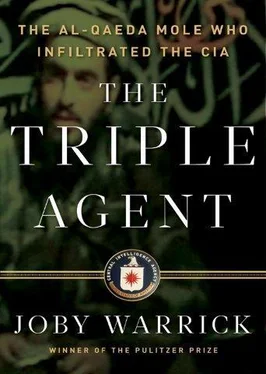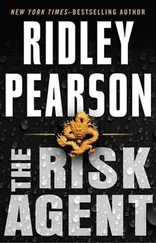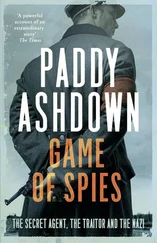The newly expanded terrorist group immediately set out to make a splash with attacks on U.S. interests. First on the list were the U.S. embassies in the capitals of Kenya and Tanzania, which were bombed in 1998 in coordinated attacks that killed hundreds of people.
Three years later, working from al-Qaeda’s new base in Afghanistan, Zawahiri helped oversee the planning of the September 11 attacks. His primary mission, however, was to plan follow-on waves of terrorist strikes that would continue for months and years to come. He personally took command of an ambitious biological weapons program, establishing a laboratory in Afghanistan and dispatching disciples to search for sympathetic scientists.
U.S. intelligence officials believe that Zawahiri’s efforts to launch a large-scale anthrax attack might have succeeded had he not run out of time. Within weeks of the collapse of New York’s World Trade Center towers, the U.S.-backed military campaign that drove al-Qaeda and its Taliban allies out of power in Afghanistan forced Zawahiri to abandon his bioweapons lab and flee the country. U.S. forces were to discover the lab, along with Zawahiri’s detailed instructions to his aides to acquire a highly lethal strain of the bacterium that causes anthrax.
By 2002 Zawahiri, like bin Laden, was in hiding in Pakistan, with a twenty-five-million-dollar bounty on his head. But unlike bin Laden, he continued to personally direct numerous terrorist operations, including an alleged 2003 plot to attack New York City’s subway system using chemical weapons. Zawahiri himself called off the attack for reasons that remain unclear.
Because of his willingness to insert himself into terrorist operations, CIA officials clung to hopes that Zawahiri eventually would make a mistake, yet each time the agency’s targeters managed to locate him, he slipped out of their grasp.
The last attempt was in January 2006, when CIA informants learned of a gathering of al-Qaeda leaders in Damadola, a town in the northern Pakistani province of Bajaur. Zawahiri was known to have visited the same province two years earlier, and agency officials were highly confident when they dispatched a Predator aircraft to orbit a mud compound a few miles outside the town. CIA missiles destroyed the building, killing eighteen people, including several al-Qaeda figures, but not Zawahiri. Pakistani intelligence officials said afterward that the al-Qaeda deputy changed his mind at the last minute and sent aides to the meeting instead.
Days later Zawahiri appeared in a new video to taunt the White House.
“Bush, do you know where I am?” he said. “I am among the Muslim masses.”
The CIA never came close again after that until the morning in November 2009 when a little-known Jordanian physician surfaced with a story about an ailing Zawahiri entrusting himself to his care.
In the days that followed, a single imperative emerged: The CIA must meet Humam al-Balawi.
As CIA officials in Langley prepared a summary for the classified digest known as the President’s Daily Brief, the files on Balawi were distressingly thin.
The Jordanians seemed to trust him, but no American had ever met him. He had bombarded Islamic Web sites with violently anti-Western screeds, yet he had flipped after only three days of relatively light interrogation by the Mukhabarat. Nothing in his lifestyle suggested a fondness for material wealth, yet he seemed only too happy to risk his life and sell out his ideological brethren in exchange for U.S. greenbacks.
Nothing about the case made sense. On the other hand, there was the matter of the al-Rahman video and Zawahiri’s medical data. In the dozen years since al-Qaeda emerged as a global threat, no one had seen anything like it.
In meetings and in conference calls between Langley and Amman, a series of options for a meeting with Balawi were weighed and rejected. Under one proposal the Jordanian would be flown back to the Middle East for an extensive debriefing. It was an appealing prospect, since Balawi’s Mukhabarat and CIA case officers were based in Amman. But it was finally rejected out of fear that Balawi’s lengthy absence from Pakistan might raise suspicions among his Taliban sponsors.
An alternative plan called for a secret meeting in a Pakistani city—Islamabad or Karachi, perhaps—but it also was ruled out. The Americans had intentionally kept Pakistan’s Inter-Services Intelligence agency in the dark since Balawi’s arrival in that country, and no one wanted to risk blowing the Jordanian’s cover at such a sensitive moment. Pakistan’s major cities were chockablock with ISI agents, and a high-level CIA gathering would almost certainly draw attention.
A safer bet, it was decided, would be to meet Balawi in Afghanistan, presumably in a place near the border that would be easily accessible for Balawi but also discreet and utterly secure. The meeting spot would have to be reachable by car from Pakistan’s tribal region, yet also firmly under the CIA’s control, with no possibility of detection by Taliban spies.
The CIA commanded at least six bases along the Afghan frontier, but only one of them sat on an asphalt highway that connected directly with Miranshah, the town in North Waziristan, Pakistan, closest to Balawi’s last known position. Thus, by accident of geography, the CIA’s choice for its much-anticipated first meeting with the Jordanian agent was the agency base known as Khost.
Key details of the proposed meeting, including Balawi’s willingness to submit to such a plan, were still far from clear. But from the day the informant invoked Ayman al-Zawahiri’s name in an e-mail, the mission to find Balawi and drain him of information became a priority of almost unrivaled importance.
“The upper level of government was crying out for information and wanted answers to keep the country safe,” said former U.S. ambassador to the United Nations Thomas Pickering, a career diplomat who co-led a classified, independent investigation of the events. “There were government servants who were intent on getting the job done, and they were prepared to go the last mile to do it.”
“Yes, but …”
Humam al-Balawi was not making it easy. Jordanian intelligence captain Ali bin Zeid, unsure how Balawi would react, had broached the idea of a meeting somewhat tentatively at first. Your reports have been most interesting , bin Zeid wrote in a late-November missive. Now we’d like to take things up a notch .
Balawi seemed instantly agreeable to the idea of seeing bin Zeid again. But he put up so many conditions and qualifiers that bin Zeid was left wondering whether the meeting would ever come about.
Yes, but I don’t want to meet with anyone except you , he wrote at one point.
Yes, but it’s too dangerous to cross the border , he said in a separate note. And, finally: Yes, we should meet. But I think you should come to me .
Over several days of exchanged messages, Balawi became increasingly insistent. The ideal meeting place, he declared, was Miranshah, North Waziristan’s sprawling market town just across the mountains from Afghanistan. Balawi knew the town and would find a secure place where both he and his Jordanian countryman would be safe. There were cafés and bazaars, shops and mosques, all of them crowded with people. The two Jordanians could meet discreetly without attracting attention, and then Balawi could be on his way again.
Bin Zeid gently pushed back. North Waziristan was too risky, he said. Khost, on the other hand, was a fortified military camp guarded by Special Forces commandos and attack helicopters. Both men would be safer there.
“I’m the one who’s taking all the risks over here,” Balawi protested. He was sure that Afghan spies at the American base would betray him, and then he’d be finished, killed in the most gruesome of ways. Balawi had seen what the Taliban did to suspected informants. He repeated his plea.
Читать дальше












